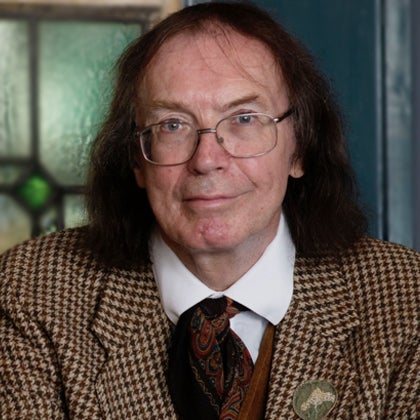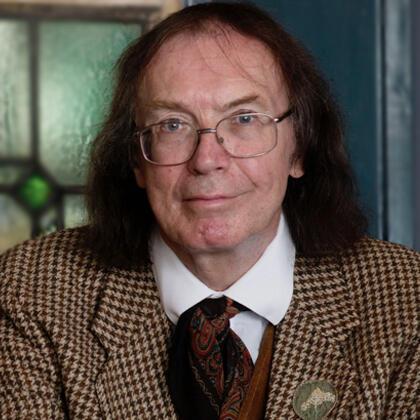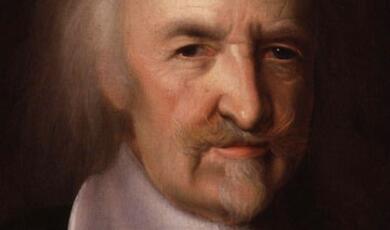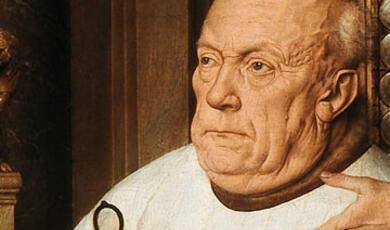The Modern Goddess
Share
- Details
- Text
- Audio
- Downloads
- Extra Reading
This lecture looks at how and why a particular form of the non-Christian divine feminine took over the Western European imagination from the beginning of the nineteenth century – a great goddess representing the natural world, or the moon and stars, or both. It traces the development of belief in this being’s importance, and her impact not only on creative literature but upon the developing disciplines of ancient history and archaeology. It also confronts the problem of the different kinds of politics this figure represents.
Download Text
The Modern Goddess
Professor Ronald Hutton
8 January 2025
This talk examines how the modern Western world came to have its most common image of what a goddess should be. In the ancient world goddesses were most often patronesses of aspects of human life and civilisation rather than those of nature. Moreover, the overwhelming majority of those who worshipped them believed that they were genuinely separate personalities. In only one, late, ancient text, the Metamorphoses of Apuleius, is a female deity declared to be the embodiment of all goddesses, the mistress of nature, and represented by the moon. Nonetheless, it is Apuleius’s image which has predominated in modernity.
It began to do so with the coming of the Romantic Movement at the opening of the nineteenth century, which exalted the natural and irrational (qualities previously stigmatized as ‘feminine’) and a recognition that humanity could be suffering from too much civilization. It began to value wild nature, the night and the moon over farmlands and cities, the day, and the sun. These impulses were felt especially keenly in England, which led other European nations in urbanization and industrialization. In the 1810s two of the first English Romantic poets, John Keats and Percy Shelley, hailed the moon and the earth, respectively, as a beloved goddess. In the next decade this image ran into music, expressed in the most famous aria of Bellini’s opera, Norma. By the next generation, in the poetry of Robert Browning and the fictional prose of Charlotte Bronte, it was thoroughly internalized. The final stage was to bring moon, stars, and earth together, as a single great goddess, and this was achieved in the 1860s, by Algernon Swinburne. In his poetry the mighty creatrix of later spiritual feminism, the single entity out of whom all deities and all living things were formed, is already present. It would be easy to follow her into later English literature, considering for example D. H. Lawrence’s identification of eternal woman with the moon, or Robert Graves’s White Goddess. It would also be easy to trace her development into the standard goddess form of modern Paganism, through the writings of occultists such as Aleister Crowley, Dion Fortune, and Gerald Gardner.
Instead, this talk is going to consider the impact of this concept of goddess on fields which are normally regarded as more objective than religion: ancient history and archaeology. It seems to have been the German scholar Eduard Gerhard, in 1849, who first suggested that behind all the goddesses of historic Greece stood a single great one, representing nature, who was worshipped across the Near East during prehistory. As the nineteenth century wore on, more and more classicists, in France, Germany and Britain, began to make the same suggestion. It sometimes combined with another, arising from a debate between lawyers over the origins of society: that the earliest human cultures had been woman-centred in human affairs as in religion. When excavation began to reveal female figurines on Paleolithic sites all across Europe, and Neolithic sites in the south-east, some scholars automatically identified them with the Great Goddess whom they now presumed to have been worshipped in that remote period. One of the most significant was Jane Ellen Harrison, a Cambridge classicist who in 1903 published the view that prehistoric south-eastern Europe had been a peaceful and creative woman-centred civilization which venerated a single goddess in three aspects, the first two being maiden and mother. She suggested that it had been destroyed by patriarchal invaders from the north, bringing male deities and warlike ways. Humanity, in her view, had never recovered from this disaster.
All these theories, however, only concerned south-eastern Europe and the Near East. Experts in the emerging field of north-western European prehistory reserved judgement. This was because their Neolithic looked different, lacking female figurines, and possessing a monumental tradition of megalithic chambered tombs instead. In 1939, however, the vital piece of evidence for a goddess-centred religion there seemed to appear, at Grimes Graves, the famous Neolithic flint mines in England. It consisted of a female figurine, seated upon an altar, with a basin for offerings before it. In 1991 an investigation was launched into these objects which concluded that they appeared to be modern fakes. At the time, however, they were taken as solid evidence for a generally goddess-centred Neolithic, and a belief in that was propagated especially during the next three decades by Jacquetta Hawkes, one of the most popular authors on European prehistory. She developed Harrison’s view of a peaceful, creative, and feminist Neolithic devoted to the Goddess and destroyed by patriarchal and brutal invaders. In her view that Neolithic had covered the whole of Europe and the invaders who brought in metal, war and the abuse of nature had been the Indo-Europeans. By the 1950s the leaders of European archaeology had come to agree that Neolithic Europe had been devoted to the Great Earth Mother, and psychologists adopted this model in turn.
It was rejected in the 1960s and 1970s, as younger archaeologists reexamined the evidence in different areas and concluded there was no decisive evidence for the cult of a single deity. That was not disproved, but the matter was returned to being an open question, and most experts since have occupied a position of cautious agnosticism with respect to it. They could do so with the more relief in that the image of the Neolithic Great Goddess had become politically loaded, having changed from a radical to a conservative construct. Its main twentieth-century proponents tended to be writers who loathed modernity and socialism, favoured a reactionary sentimentality, and used the image of the goddess to promote a model of femininity associated with the natural world and motherhood, not government, science, or enterprise. It also depended on concepts of essential female or male qualities in humanity, which anthropology was starting to undermine.
It was therefore a shock to most European archaeologists when the old image and language returned to Britain from America in the 1980s, but this time as part of a radical discourse. Writers in the United States had simply reversed the sympathies, attaching a positive value to qualities which had been defined as negative. The most famous proponent of this enterprise, and the only distinguished archaeologist to support it, was Marjia Gimbutas in California, who won a large popular following by repeating the ideas of authors like Hawkes as if they were her own discovery and backing them with more material. European archaeologists who had accepted for a decade or more the arguments for not believing in the traditional Great Goddess could not accept her now because she had reappeared with an American accent and a new kind of politics. As a result, they found themselves abused as patriarchs and reactionaries by the believers in the Gimbutas construct.
From the 1990s, however, things started to shift again. Female archaeologists in America suggested that a true feminist interpretation of prehistory was one which emphasised the ambiguity of the record and the plurality of its interpretation. Other women academics questioned anew the notion of an essential femininity. These ideas now seem dominant. I myself would not dream of defining what a ‘true’ feminist archaeology should be and leave open the questions of whether the Neolithic was the age of the Great Goddess or whether there are essential gender characteristics among humans. I also leave open the question of whether such a goddess actually exists. What I am certain about is the major part she has played in modern cultural politics.
© Professor Ronald Hutton 2025
References and Further Reading.
Hutton, Ronald, The Triumph of the Moon. 2021.
Chanek, Jack, Queen of All Witcheries. 2023
Goodison, Lucy, and Christine Morris, eds., Ancient Goddesses, 1998.
© Professor Ronald Hutton 2025
References and Further Reading
Hutton, Ronald, The Triumph of the Moon. 2021.
Chanek, Jack, Queen of All Witcheries. 2023
Goodison, Lucy, and Christine Morris, eds., Ancient Goddesses, 1998.
Part of:
This event was on Wed, 08 Jan 2025
Support Gresham
Gresham College has offered an outstanding education to the public free of charge for over 400 years. Today, Gresham College plays an important role in fostering a love of learning and a greater understanding of ourselves and the world around us. Your donation will help to widen our reach and to broaden our audience, allowing more people to benefit from a high-quality education from some of the brightest minds.


 Login
Login







